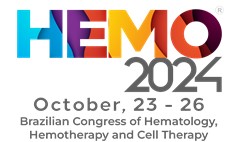
Porphyria is a group of metabolic diseases caused by hereditary defects in the enzymatic system of heme biosynthesis. We present three cases of familial porphyria in two sisters (50 and 45-years-old) and a brother (39-years-old). The clinical symptoms of these patients were analyzed, and it was found that all patients have the same symptoms of the disease since childhood: constantly dark urine, burn-like changes on the skin of the face and ears, long-lasting wounds, moderate splenomegaly, and deformity of the joints on the fingers.
Clinical caseHere, we present the some clinical and laboratory data one of the three patients. This patient was initially diagnosed with scleroderma, but due to the splenomegaly, she was referred to a hematologist to clarify the diagnosis. It was found that since childhood she had black urine, poorly healing wounds, and burn-like changes on the face and on the hands, which most often appeared after exposure to the sun. A physical examination revealed splenomegaly (+2‒3 cm). The urine was initially intensely yellow-colored ‒ when exposed to bright sunlight, the color changed to a dark yellow color. Total porphyrins in daily urine were 1.93 mg/L (norm 0‒0.15 mg/L), uroporphyrinogen in single probe urine is 13 mg/L (norm 0‒2 mg/L), and δ-aminolevulinic acid is 16.7 mg/L (norm 0.1‒4.5 mg/L). The patient’s sister and brother also were examined for quantitative tests for porphyrins in the urine. Both had similar porphyrin samples in their urine: total porphyrins in single probe urine – 1.23‒1.3 mg/L, uroporphyrinogen in single probe urine – 12‒13 mg/L, δ-aminolevulinic acid – 17.1 mg/L.
ConclusionsIncreased excretion of porphyrin precursors is one of the permanent signs of the disease and is observed not only during acute manifestations of the disease but also during the period of remissions, among the people with the latent form of the disease. Analyzing the results of our discussions, we can draw the following conclusions. Porphyria is a rare disease with very variable clinical symptoms, which causes certain difficulties in its timely diagnosis. To verify the diagnosis, even in the presence of a characteristic clinical picture, it is necessary to study the excretory profile of porphyrin metabolism with quantification of porphyrin precursors and fractions, as well as a comprehensive genetic examination.






